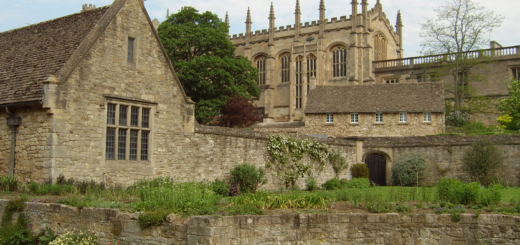Church Records: A Goldmine for Genealogists
When tracing your family history, church records can be one of the most valuable sources of information. For centuries, churches have been the keepers of vital records, documenting life events such as baptisms, marriages, and burials. These records often provide insights that are not available in civil records, making them a goldmine for genealogists. In this article, we will explore the types of church records available, how to access them, and the unique information they can offer to enrich your genealogical research.
1. The Importance of Church Records in Genealogy
Church records are often some of the oldest and most comprehensive records available, especially in regions where civil registration was not established until much later. Understanding the significance of these records can help you appreciate their value in your genealogical research.
Why Church Records Are Essential
Before the advent of civil registration, churches were often the only institutions recording key life events. Baptisms, marriages, and burials were typically documented by the local parish, making church records some of the earliest and most reliable sources of genealogical information. Even after civil registration began, many people continued to record significant events with their church, resulting in parallel sets of records that can corroborate or complement civil documents.
Historical Context of Church Records
Church records date back several centuries, with some parish registers beginning as early as the 1500s in parts of Europe. These records provide a continuous historical record of families within a community, often capturing multiple generations. Understanding the historical context in which these records were kept can help you interpret the information more accurately and gain a deeper understanding of your ancestors’ lives.
Types of Churches and Their Records
Different denominations and religious institutions kept varying types of records. The types of records you may encounter can depend on the specific church and its practices. In addition to mainstream Christian denominations like Catholic, Protestant, and Orthodox, consider researching other religious groups your ancestors may have belonged to, such as Jewish synagogues or Quaker meetings, as they also kept detailed records.
2. Types of Church Records and What They Reveal
Church records encompass a variety of documents, each offering unique insights into your ancestors’ lives. The following are some of the most common types of church records you may encounter.
Baptismal Records
Baptismal records are often the most frequently used church records in genealogy. These records typically include the name of the child, the date of baptism, and the names of the parents. In many cases, the records also provide the names of godparents or sponsors, who were often close family members or friends. Baptismal records can be particularly valuable for identifying birth dates and familial relationships, especially in cases where civil birth records are missing or incomplete.
Marriage Records
Marriage records are another key resource for genealogists. These records usually include the names of the bride and groom, the date of the marriage, and the names of witnesses. In some cases, the records may also provide information about the parents of the couple, their ages, places of residence, and even the names of previous spouses if either party was widowed or divorced. Marriage banns, which were public announcements of an intended marriage, can also provide additional details, such as any objections raised to the union.
Burial and Death Records
Burial and death records maintained by churches can provide crucial information about an ancestor’s final years. These records typically include the name of the deceased, the date of death or burial, and often the age at death. In some cases, additional information such as the cause of death, the name of the spouse, or the place of burial may be included. These records can help you pinpoint death dates and locate gravesites, which can lead to further discoveries through cemetery records or gravestone inscriptions.
Confirmation and Communion Records
Confirmation and communion records, while less commonly used in genealogy, can still provide valuable information. Confirmation records often include the names of the confirmands, their ages, and sometimes the names of their parents. These records can help establish a timeline of an ancestor’s life and provide additional context about their religious upbringing. Communion records, particularly those kept by Catholic and Orthodox churches, can also offer insights into your ancestor’s spiritual life and community involvement.
Other Church Records
In addition to the more common types of records, churches often kept other documents that can be useful in genealogical research. These may include membership lists, tithing records, minutes of church meetings, and records of church censuses. Such documents can provide a broader view of your ancestor’s role within their religious community, as well as their social and economic status. Additionally, churches sometimes recorded special events such as conversions, excommunications, or religious disputes, which can shed light on your ancestor’s personal beliefs and challenges.
3. Accessing Church Records: Where to Start
Accessing church records can be a rewarding but sometimes challenging process. Knowing where to look and how to navigate the available resources is key to uncovering these valuable documents.
Start with Local and Parish Archives
The first place to search for church records is often the local parish or church where your ancestors lived. Many parishes have maintained their records for centuries and may still hold original documents. Contact the church directly or visit in person if possible. If the records are not available on-site, the church may have deposited them in a diocesan or regional archive, so it’s worth inquiring about where older records are kept.
National and Regional Archives
In many countries, church records have been centralized in national or regional archives. For example, in the United Kingdom, many parish records are held at county record offices or the National Archives. In the United States, some older church records are housed in state archives or historical societies. These institutions often have indexes or catalogs that can help you locate the records you need. Additionally, some archives have digitized their collections and made them available online, providing easier access for genealogists worldwide.
Online Genealogy Platforms
Several online genealogy platforms have extensive collections of church records. Websites like Ancestry.com, FamilySearch.org, and MyHeritage.com offer searchable databases of church records from around the world. These platforms often include digital images of original documents, allowing you to view and download records from the comfort of your home. Be sure to use specific search criteria, such as the name of the church or denomination, to narrow down your results and increase the chances of finding relevant records.
Specialized Church Record Collections
Some organizations and websites specialize in specific types of church records or focus on records from particular regions. For example, the Catholic Church’s sacramental records are often available through diocesan archives or websites like the Catholic Heritage Archive. Similarly, JewishGen.org offers access to a wide range of Jewish community records, including synagogue registers. Identifying and exploring these specialized resources can help you uncover church records that may not be available on more general genealogy platforms.
4. Analyzing and Interpreting Church Records
Once you’ve located church records, it’s important to analyze and interpret the information they contain carefully. Church records can provide a wealth of details, but they may also present challenges in terms of legibility, language, and context.
Deciphering Handwriting and Language
Church records, especially older ones, are often handwritten in cursive, making them difficult to read. Additionally, they may be written in Latin or the vernacular language of the time, which could be unfamiliar to modern readers. To decipher these records, familiarize yourself with common genealogical terms and phrases in the relevant language, and consider using translation tools or reference books to assist with interpretation. If the handwriting is particularly challenging, comparing the record with others from the same time period can help you recognize patterns and common forms of letters and words.
Understanding the Context
Context is crucial when interpreting church records. Consider the historical, cultural, and religious background of the time and place where the record was created. For example, the significance of godparents in a baptismal record might vary depending on the denomination or region. Additionally, understanding local customs and practices can provide insights into why certain information was recorded or omitted. Contextualizing the record can help you make sense of the details and place your ancestor’s life within a broader historical narrative.
Cross-Referencing with Other Records
Church records should be cross-referenced with other sources to verify their accuracy and gain a more complete picture of your ancestor’s life. Compare the information in church records with civil records, census data, and family documents. Look for consistencies or discrepancies in names, dates, and relationships. Cross-referencing can help confirm the identity of your ancestor and uncover additional details that may not be evident from a single record.
Identifying Patterns and Connections
As you analyze church records, pay attention to patterns and connections that may emerge. For example, repeated names of godparents or witnesses could indicate close family or community ties. Patterns in naming conventions, such as the use of specific family names across generations, can also provide clues about family relationships. By identifying these patterns, you can piece together a more detailed and accurate family history.
5. Overcoming Challenges in Church Record Research
Researching church records can present unique challenges, including incomplete records, language barriers, and restricted access. However, with perseverance and the right strategies, you can overcome these obstacles and make significant progress in your genealogical research.
Dealing with Incomplete or Missing Records
Church records are not always complete or perfectly preserved. In some cases, records may have been lost, damaged, or never created in the first place. If you encounter incomplete records, try looking for alternative sources of information, such as family Bibles, letters, or local histories. Additionally, consider expanding your search to neighboring parishes or churches, as your ancestors may have attended services or registered events in more than one location.
Addressing Language Barriers
Language barriers can be a significant challenge when researching church records, especially if they are written in an unfamiliar language or script. To overcome this, invest time in learning key genealogical terms in the relevant language, and use translation tools to assist with more complex phrases. If you are still struggling, consider seeking help from a professional genealogist or a local expert who is familiar with the language and records of the area you are researching.
Accessing Restricted or Private Records
Some church records may be restricted or held in private collections, making them difficult to access. If you encounter restricted records, try contacting the institution directly to inquire about access policies or alternative ways to view the records. In some cases, you may be able to request copies or transcripts of specific entries. If the records are held privately, consider reaching out to local historians, clergy, or community members who may have connections to the custodian of the records.













Recent Comments